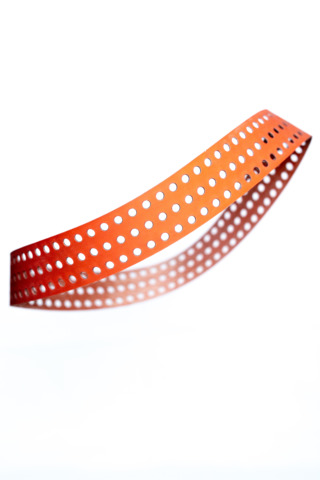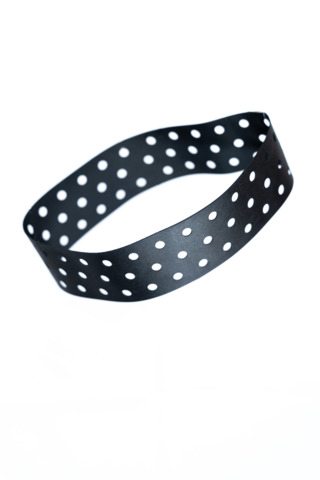What Makes a Printer?
How to select the right belt for your printer.

Whether its printed textiles for the fashion industry, wide format printed billboards or highspeed printing for packaging, magazines or promotional materials - printers help bring ideas to life. With customers demanding greater image quality at ever increasing print speeds, printer technology advancement has been at the forefront of growth in the sector.
Whilst much of that development has focussed on areas including sensors, drive systems and rollers, one often overlooked, yet integral piece of kit has also been undergoing a quiet technological evolution – media transport belts. To understand the science behind these belts, we caught up with Mark Wilkinson, Technical Lead for Printers at Fenner Precision in the UK.
 Mark Wilkinson, Technical Lead for Printers, Fenner Precision UKMark has been an integral part of the Innovation and Technology team at Fenner Precision for over 14 years. Often finding himself at the heart of critical innovations and developments, he has earned the nickname amongst his colleagues of “The Oracle”, likening him to the eponymous all-knowing character from The Matrix due to the huge amount of product and technical knowhow he has accumulated over the years.
Mark Wilkinson, Technical Lead for Printers, Fenner Precision UKMark has been an integral part of the Innovation and Technology team at Fenner Precision for over 14 years. Often finding himself at the heart of critical innovations and developments, he has earned the nickname amongst his colleagues of “The Oracle”, likening him to the eponymous all-knowing character from The Matrix due to the huge amount of product and technical knowhow he has accumulated over the years.
Can you start by telling us why belts are such an important part of what printers are made of?
Printer belts are responsible for transporting media, whether that’s paper, textile or anything else through the printer quickly, smoothly and precisely. By doing this, a well-designed belt will enable printer users to deliver accurate output and image quality whilst minimizing printer jams and downtime.
So, in your opinion, which belt, currently available on the market, does that best?
If only it was that simple! While there are many good quality standard belts that can be purchased “off the shelf”, I’ve found that there are just far too many variables and variances in individual printer manufacturers’ systems to get the best possible results with standard belts.
In that case, what are the fundamentals of printer belts that manufacturers should look out for?
The first step on the path to the right belt which works in sync with a printer system is to ensure that the material formulation of the belt is aligned to the unique strains and challenges of that system. This can eradicate some common problems right from the onset. For instance, while silicone belts are generally non-marking, EPDM belts must be formulated specifically to deliver the same benefit which is obviously critical in ensuring print quality.
OK great, now that we’ve got our correctly formulated belt material, what happens next?
The next consideration for printer manufacturers will centre around heat resistance. For large industrial and commercial printers where speed is key, the internal systems can be exposed to very high temperatures which can negatively impact belt performance. Although EPDM belts offer a good level temperature resistance, sometimes that’s still not enough.
In these instances, a good way of overcoming the heat resistance challenge printer manufacturers can face is to move to silicone belts with specialist reinforcements, such as woven fiberglass.
Is there anything else that can be done to give printer manufacturers confidence that they have the right belt for their system?
Possibly the most challenging part of printer belt design is delivering perfect grip balance to ensure that the media being transported through the printer is carried precisely, quickly and smoothly. If vacuum assistance is being utilized within the printer, the belt perforation pattern, hole-spacing and size all become crucial for consistent feed. Too much or too little grip can both lead to costly downtime.
Belt perforation can only be done with a range of specialist mechanical punching equipment and in the instances where fiberglass reinforcement is used, holes should be laser cut. This is because mechanical punching causes loose fibre edges which can dissipate through the printer and build up over time creating internal sensor malfunctions and clog the airflow cooling system.
In addition to the belt perforation pattern, hole size and spacing, the belt surface itself can be textured to compliment other factors to deliver perfect grip balance.
 Fiberglass reinforced media transport belt
Fiberglass reinforced media transport belt
It seems like there is a lot of thought and design that goes into delivering against the vacuum specification of printer manufacturers?
Yes, there are so many different technical knowledge and equipment capabilities required to get the grip balance right, but even if the belt delivers against the vacuum specification, another challenge it must overcome is belt tracking. This is when the belt drifts on the pully from side to side and is a particular issue on wide format printers. Tracking issues are a common cause of printer jams, belt breakages and excessive wear on the belt, but also potentially the printer itself, depending on what the belt is rubbing against. So, it is important not just to get the media-facing part of the belt right, but the internal belt surface coating must also be aligned to the unique needs of each printer system.
In essence, to ensure that printer manufacturers get the right media transport belts that works seamlessly with their systems, collaboration, technical capability and knowledge are crucial. It’s only through understanding how each printer system works that a belt can have the correct material formulation, perforation pattern and size, as well as surface texture and internal coating to deliver quick, precise and accurate media throughput.
To learn more, visit Fenner Precision.

